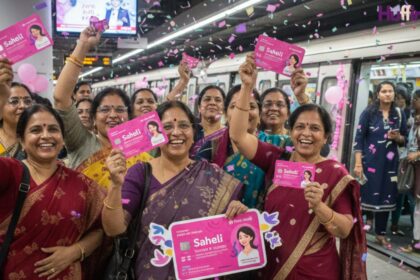Lucknow, November 15 (Governance Desk) — The Uttar Pradesh government has started deploying UP AI-based surveillance systems at key pilgrimage sites as part of an expansive initiative to modernise temple security ahead of the peak winter tourism season. With footfall at iconic religious destinations like Ayodhya, Kashi Vishwanath and Mathura increasing significantly, the state has opted for a technology-first approach to enhance crowd management, improve emergency response and ensure the safety of millions of devotees.
The initiative, announced earlier this month, reflects a growing trend across states to integrate artificial intelligence and real-time analytics into public-safety infrastructure. UP officials say the new AI-based surveillance systems will help address long-standing challenges such as overcrowding, delayed response during emergencies, and the difficulty of monitoring large temple complexes with traditional methods.
A Modern Approach to an Age-Old Challenge
Ayodhya’s Ram Mandir, which has emerged as one of the country’s busiest pilgrimage destinations, now sees lakhs of devotees visiting every week. Similar patterns are visible at Kashi Vishwanath Corridor, which underwent a major redevelopment, and Banke Bihari Temple in Mathura, where dense crowds during festivals often lead to safety concerns.
Officials explained that while police deployment remains strong, the sheer volume of pilgrims requires technological intervention. The new system includes:
- AI-powered cameras with high-definition zoom
- Facial recognition tools for identifying lost individuals or flagged persons
- Crowd density mapping, helping prevent stampede-like situations
- Thermal sensors for night-time monitoring
- Behavioural anomaly detection to identify sudden unusual movements
- Automated emergency alerts triggered by AI analysis
The technology provides continuous monitoring across multiple vantage points, feeding data into a centralized dashboard staffed by trained operators.
Police Integration for Faster Response
The Uttar Pradesh Police has integrated the AI system into district-level control rooms, enabling quicker coordination between security personnel inside temple premises and external rapid-response units. According to officials, this reduces the time between detection of a safety risk and ground-level intervention.
A senior officer said,
“The AI system does not replace police personnel but empowers them with better situational awareness. It acts as an intelligent eye, alerting us faster and more accurately.”
During pilot testing in Ayodhya, officials observed significant improvement in crowd-flow regulation during peak hours.
Balancing Security With Devotee Experience
Authorities emphasize that the objective is to enhance the devotee experience, not to intrude on privacy. The system does not track individuals beyond what is necessary for safety. Data, officials say, is stored only temporarily and used solely for monitoring purpose.
The improved management is expected to streamline queues, reduce wait times and ensure smoother darshan for elderly devotees and families.
Local shopkeepers and tourism operators have welcomed the move, saying that improved safety boosts confidence among visitors. Many believe the initiative will help UP maintain its momentum as a leading religious-tourism destination.
Expanded Rollout Across the State
The first phase covers five major temples, including Ayodhya, Kashi and Mathura. The second phase, beginning early 2026, will bring similar systems to 35 additional temples across the state, including:
- Vindhyachal Temple (Mirzapur)
- Naimisharanya (Sitapur)
- Deogarh temples
- Shukratal pilgrimage sites
The state government has allocated special funds for infrastructure upgrades, command centres, training of personnel and maintenance.
Conclusion
Uttar Pradesh’s decision to adopt AI-powered surveillance represents a significant step toward future-ready public safety. As religious tourism grows, the initiative is expected to ensure a safer, more organized experience for millions of devotees while demonstrating how technology can complement tradition in a rapidly changing India.


























